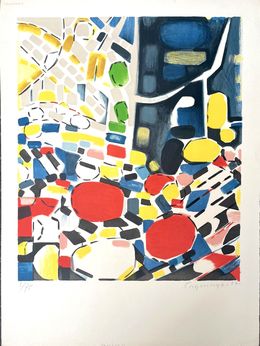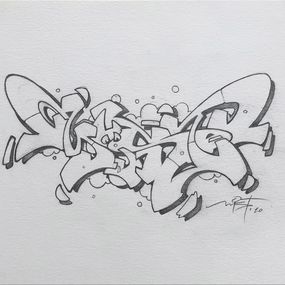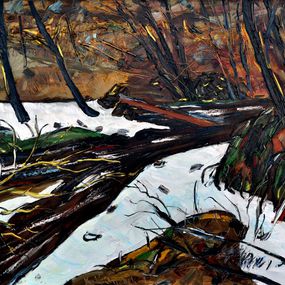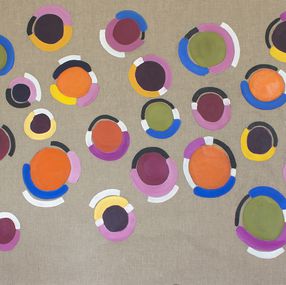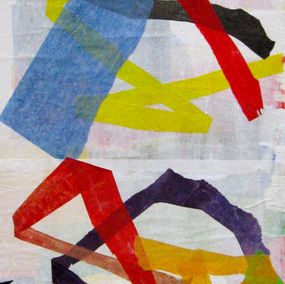

France
• 1917
Biography
Jacques Lagrange, born in Paris on July 28, 1917, died on July 4, 1995, is a French painter, engraver and screenwriter. Jacques Lagrange entered the National School of Decorative Arts in 1933 and attended the engraving workshop at the École des Beaux-Arts in Paris. In 1937, he participated with Raoul Dufy in the decoration of the electricity pavilion at the International Exhibition in Paris. Mobilized in Angers, he discovered the Tapestry of the Apocalypse. Released and demobilized in 1944, Lagrange joined his workshop in Arcueil. Invited to the first Salon de Mai in 1945, he then participated every year and exhibited at the Galerie de France of Myriam Prévot and Gildo Caputo in 1946 and 1953. Accomplishing an old project, he left for Aubusson and produced his first tapestries there. direct with the craftsmen. From 1955, his paintings were regularly presented by the Villand et Galanis gallery, alongside those of Roger Chastel, Maurice Estève and Charles Lapicque. Jacques Lagrange is the co-writer of the Vacances de Monsieur Hulot (1953), Mon uncle (1958), Playtime (1967), Trafic (1971) and Parade (1974) by Jacques Tati, whom he met in 1945 and with whom he would not stop until upon his death in 1982 to collaborate as artistic advisor. He also worked with Jean Vilar, creating in 1958 the sets and costumes for Ubu for the TNP. Lagrange produced several monumental works integrated into the works of architect Édouard Albert, a 600 m2 ceiling for the Croulebarbe tower, also known as the Albert tower (1957-1959), the first skyscraper in Paris, and a marble pavement (1967- 1972) for the science faculty of Jussieu for which Jean Lescure provides the epigraphy (Einstein's formula, Baudelaire's verse, Gaston Bachelard's sentence). Creator of many tapestry boxes, Lagrange is a professor at the School of Fine Arts in Paris. From 1967 to 1992, he lived in the village of Saint-Martial-le-Mont in the department of Creuse.
Read more
Nationality
Categories
Themes
Discover the movements linked to Jacques Lagrange
Discover similar artists
Discover our selections of works by artists
Need help finding your favorite? Consult our selection pages made for you.
Need to know more?
What are their 3 main works?
When was Jacques Lagrange born?
The year of birth of the artist is: 1917





